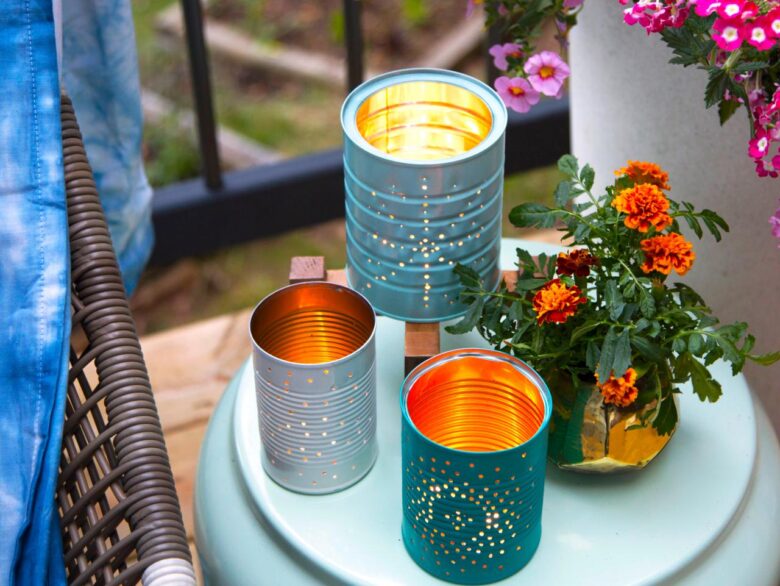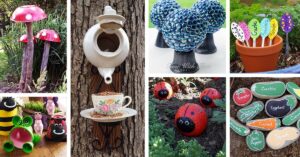The need to be environmentally friendly is stronger than ever. Making things in an environmentally friendly way not only allows us to be creative but also helps the planet. Taking on eco-friendly projects not only reduces the amount of waste but also allows you to reuse and recycle things that would otherwise end up in landfills. This article discusses some simple, meaningful, and eco-friendly projects that people of any age or skill level can do at home. The aim of these projects is to help people gain a deeper understanding of creativity, sustainability and the joy of handicrafts.
Green Paper Beads:
One of the most popular types of waste in households is waste paper. A great way to reuse old magazines, newspapers or scrap paper is to turn them into bright beads. To make them, cut the paper into long strips, roll them up with toothpicks or straws, glue the ends in place and let them dry. Then cover them with a clear varnish. You can use these beads to make necklaces, bracelets or decorations that are good for the environment.
T-Shirt Yarn Project:
Old, worn T-shirts are ideal for making yarn that is soft and durable. When you cut the T-shirt into strips and unfold it, it naturally curls into a rope shape. This cord can be knitted or crocheted into many things, such as blankets, baskets, tote bags and coasters. This project will give your home something new and useful and reduce the amount of fabric waste.
Make Your Own Natural Dye:
Using food scraps to make natural dyes is a more environmentally friendly way to dye fabric, yarn or paper than using synthetic dyes. Some natural substances that can be used to create bright colors are avocado cores, onion peels, turmeric and beetroot. This project is a great way to reuse food scraps and reduce chemical waste while playing with color.
Environmentally Friendly Seed Paper:
Making seed paper is a fun project that combines gardening and papermaking. You can make plantable paper by mixing water with recycled pulp and seeds from wild flowers or herbs. Once dry, you can use the paper to make cards or gift tags, and when you put them in the ground, they grow into beautiful plants. This is a project that continually gives back to society as it encourages recycling and greenery.
Tree Markers made from Wine Cork:
For those who love drinking, these corks can be used for making simple and practical crafts. You can turn a wine cork into a plant marker by writing the name of the plant on it and attaching it to a wooden skewer or fork that is already being used for another purpose. This idea not only reuses items but also makes your herb garden or houseplants look beautiful.
Reusing Glass Pot Lanterns:
Glass jars can be made into beautiful lanterns for jam, sauce or pickles. After cleaning your pots thoroughly, you can design them with eco-friendly paint and decoupage them with recycled paper or natural rope. If you place a candle indoors, it will provide a warm, soft glow in your home or garden.
Weaving on a Cardboard Loom:
You can make a simple loom from cardboard, which is easy to find and recycle. To attach the warp threads, cut a rectangle from the cardboard and make notches at the top and bottom. You can knit unique items from scraps of fabric, yarn or even plastic bags. These can be used as wall hangings, coasters or placemats. This project not only allows you to reuse things but also allows you to learn the ancient art of weaving through practice.
Bottle Planters made of Plastic:
Plastic pollution is a big problem for the world, but you can creatively reuse plastic bottles by turning them into hanging planters for herbs or small plants. When you’re done decorating your clean plastic bottle, cut off the bottom and fill it with dirt. Then plant your seeds or seedlings, inside. This project turns things that might have been thrown away into useful materials for growing plants or food.
Repurposed Book Journals:
You can turn old books into unique journals or notebooks. This works especially well for books that are worn or damaged. You can make a one-of-a-kind diary that still has the book’s cover and charm by taking out some of the original pages and putting in blank ones instead. This project is a lovely way to reuse things and show your love of reading.
Seed Starters in Egg Carton:
Biodegradable egg boxes, which can be made of cardboard or paper, are great for starting seeds. Just put dirt in each space, plant your seeds, and remember to water them regularly. The whole compartment can be put in the ground when the seedlings are ready to be moved. This will reduce transplant stress and encourage healthy growth.
Conclusion:
Doing crafts that are good for the earth is a fun way to show your creativity and care for the world around you. These ten projects are a good place to start for crafters who want to make environmentally friendly choices. We can make beautiful, useful things for our homes and lives by reusing, recycling, and throwing away less. This helps us feel more connected to each other and to the world. Let’s take on the task of crafting in an eco-friendly way, turning ordinary things into treasures and making the world a better place to live.
FAQs:



